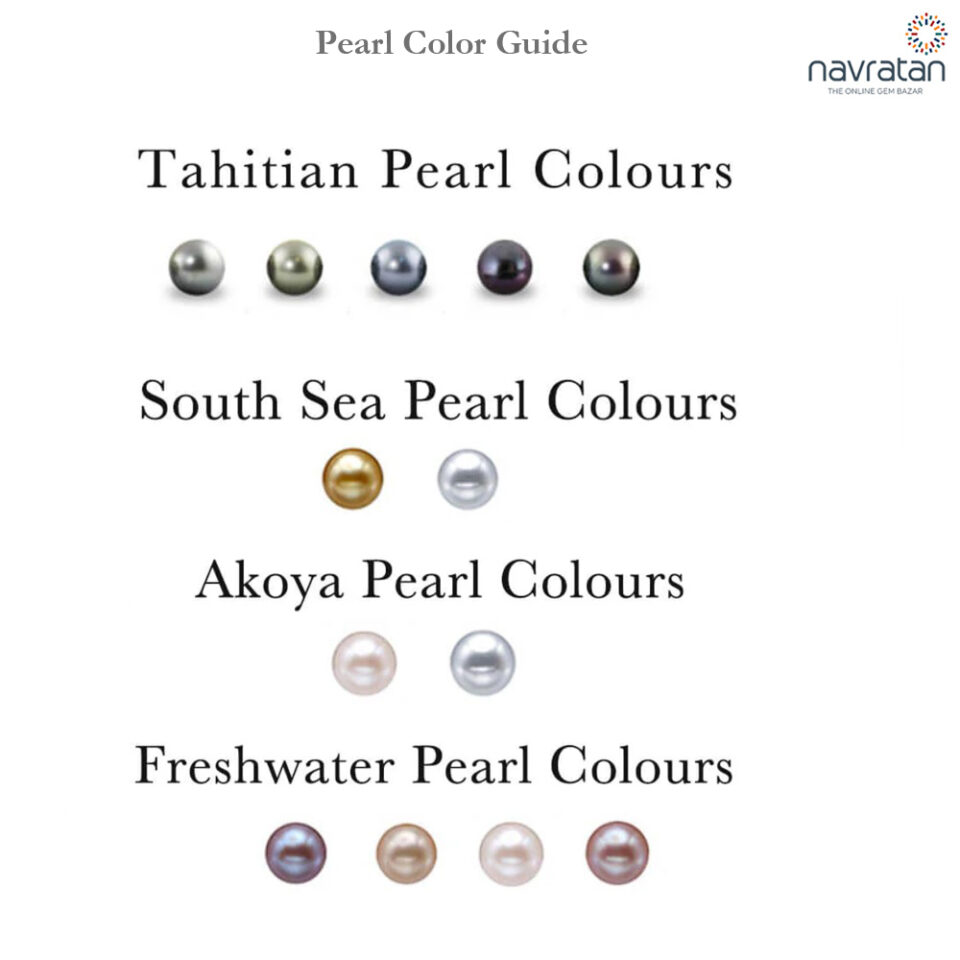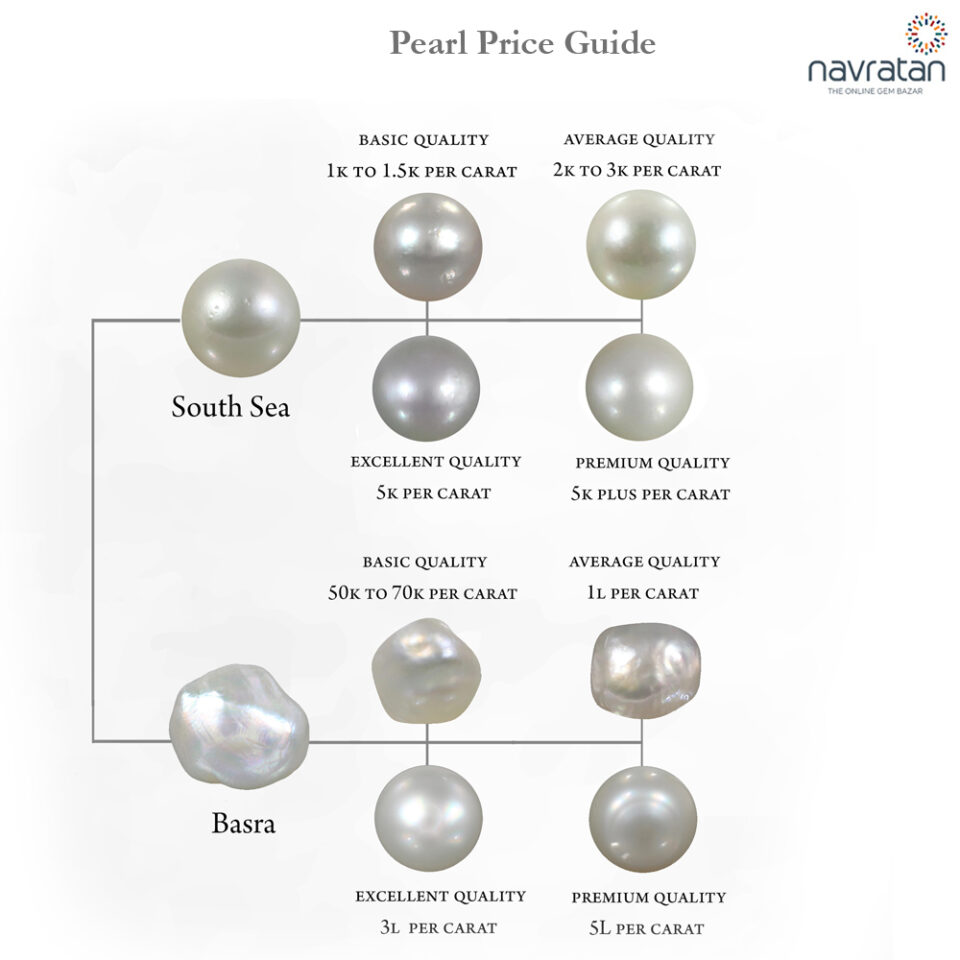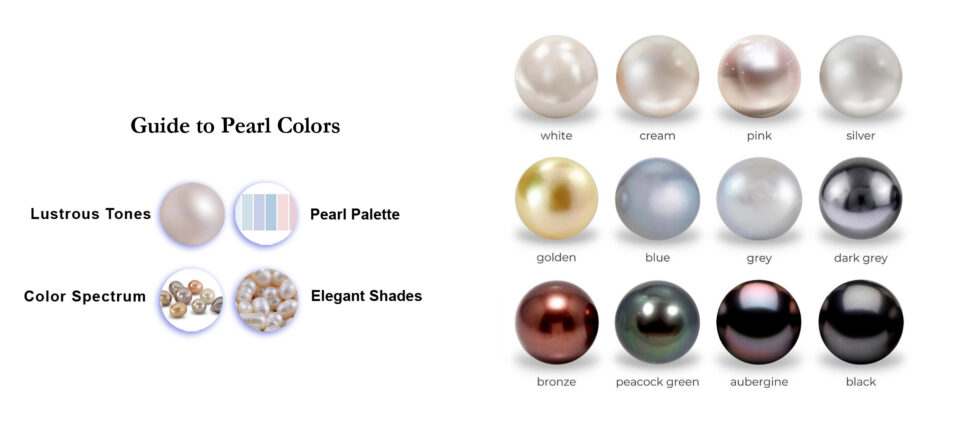Pearls are loved for their serene beauty. The white color of these gems is often compared to the moon, leading many of us to believe that they exist only in white. But do you know these natural gems are found in many colors? Golden South Sea pearl is considered the most valuable pearl color. This complete guide gives a sneak peek at these gemstones and their different colors:
How are Pearls Formed?
The formation of natural pearl stone occurs inside an oyster, a saltwater bivalve mollusk. The process begins when a foreign substance enters the oyster and irritates the mantle. This irritant causes the mollusk to secrete layers of nacre, a substance made of calcium carbonate. Over time, these nacre layers accumulate, forming a smooth layer of lustrous origin. The process can take years to complete, so natural pearls are expensive.
These organic gemstones are categorized into natural and cultured pearls. While natural ones are formed without human intervention, their less expensive counterparts result from the same.
Learn More here: How Are Pearls Formed? The Birth of Moti Gems
What Causes Pearl’s Colors?
The colors of these gems are influenced by
- Type of the Host Mollusk
- Irritant Type
- Nacre Thickness
- Environmental Conditions
For instance, rare Black Pearls are formed inside the oyster Pinctada margaritiferid, which secretes a darker nacre, giving the gem a distinct black color. Environmental conditions such as water temperature and nutrient content in French Polynesia are favorable for the growth of these oysters.
Read More here: Pearl and Its World – Navratan.com
Types of Pearl Colors
These organic gems are found in almost every color. The rarest color of the pearl is blue. Blue pearls are natural and are found in saltwater and freshwater sources. South Sea pearls are expensive as they are a byproduct of the Pinctada maxima oyster, a golden-lipped oyster.
These organic gems are highly valued and considered worth money. It takes 5 years to cultivate a single South Sea pearl, making them rarer than cultivated pearls. The pearl jewelry made out of these can cost upto $20,000.

Read More here: All Guide About Pearl Gemstones and Jewelry
Pearl Buying Tips
Read these easy tips to make your shopping experience wonderful:
- Pick a Freshwater, South Sea, or Akoya to select the most suitable one – The satin and glowy finish of each greatly vary. Akoya pearls are an excellent choice for those who want something traditional. Tahitian and South Sea variants are an excellent choice for those who want something big and exotic.
- Consider the size– Smaller pearls measuring between 6-7 mm are great for everyday use, while larger decorated pearls measuring over 8-12 mm serve as statement pieces. South Sea pearls are considered the most prominent (20mm), making them different in aesthetics.
- Check the luster quality- Pearls with high luster reflect light sharply and become more radiant. If one wishes to purchase premium quality, ensure they select a piece with a mirror-like sheen.
- Look at the surface defects – If the gem has fewer blemishes, its value increases. Microscopic flaws are still permissible, but those with deep cuts or scratches should be avoided.
Know more about the significance of these gems in different cultures: Navigating the Astrological Benefits of Pearl Gemstones.
- Choose the most appropriate shape- Round pearls are known to have the highest value, but baroque and oval shapes have their own beauty.
- Colors You Love—White pearls are versatile. However, for an unconventional look, jewelry with colorful pearls like pink, green, and purple is also in trend.
- The thickness of the Nacre – Thick nacre ensures durability and shine.
- Purchase at a reputable store—Buy natural pearls from reputed gem dealers like Navratan. They provide authentic lab-certified pearl gemstones to ensure you get what you pay for.

How to Care for Your Pearls
- Avoid the use of perfumes, hairsprays, and cosmetics on pearl jewelry. This will damage the shine of the gem.
- Wipe the surface with a damp, soft cloth.
- Keep your pearl necklace separately in pouches so they don’t entangle with other jewelry.
- Do not expose your jewelry to heat and water. Remove the jewelry in the shower.
To conclude, Pearls are delicate and need proper care to maintain their beauty and longevity. If you want to include them in your heirloom jewelry, make sure you buy pearl jewelry from authentic dealers.

